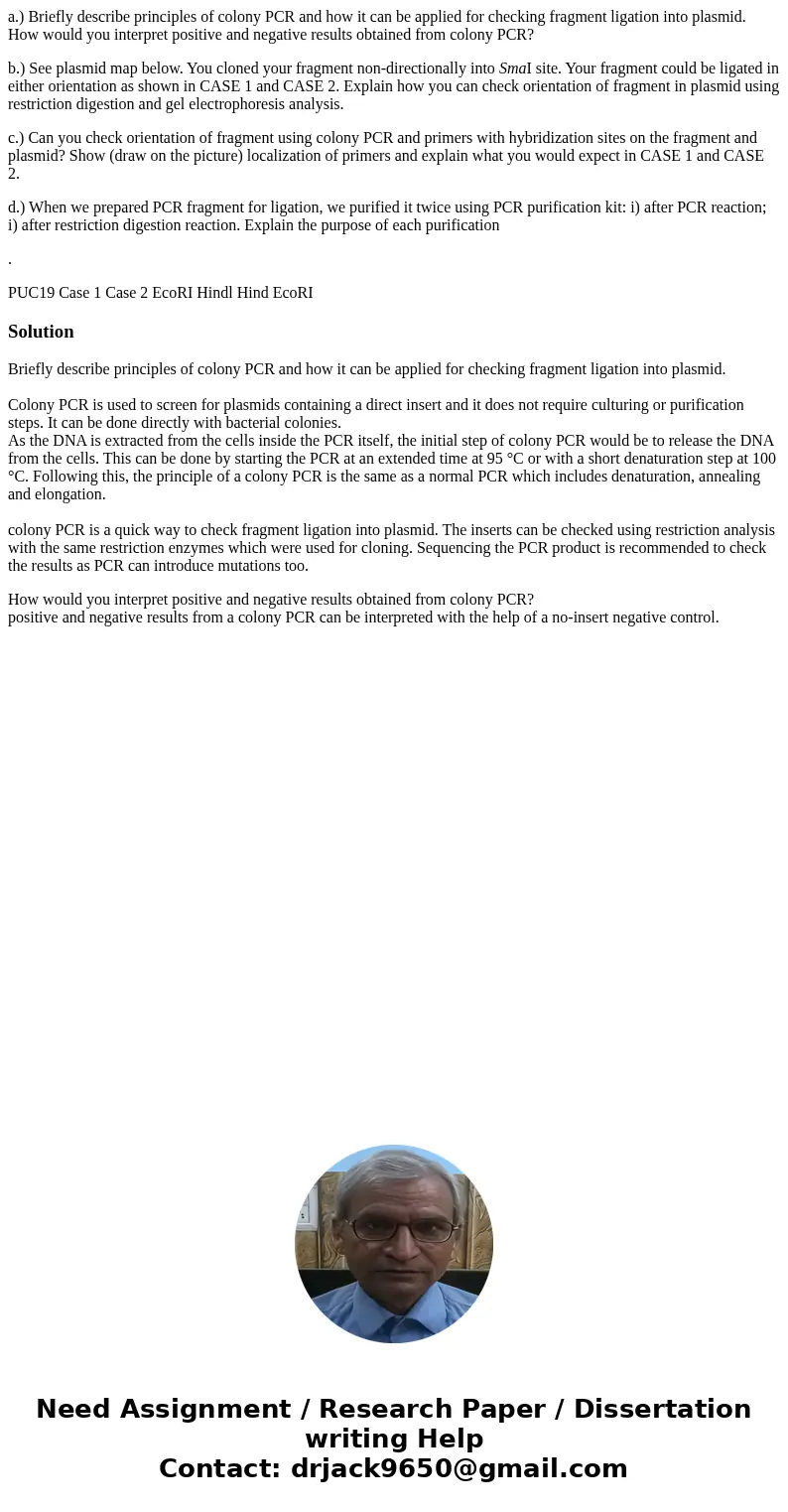a Briefly describe principles of colony PCR and how it can b
a.) Briefly describe principles of colony PCR and how it can be applied for checking fragment ligation into plasmid. How would you interpret positive and negative results obtained from colony PCR?
b.) See plasmid map below. You cloned your fragment non-directionally into SmaI site. Your fragment could be ligated in either orientation as shown in CASE 1 and CASE 2. Explain how you can check orientation of fragment in plasmid using restriction digestion and gel electrophoresis analysis.
c.) Can you check orientation of fragment using colony PCR and primers with hybridization sites on the fragment and plasmid? Show (draw on the picture) localization of primers and explain what you would expect in CASE 1 and CASE 2.
d.) When we prepared PCR fragment for ligation, we purified it twice using PCR purification kit: i) after PCR reaction; i) after restriction digestion reaction. Explain the purpose of each purification
.
PUC19 Case 1 Case 2 EcoRI Hindl Hind EcoRISolution
Briefly describe principles of colony PCR and how it can be applied for checking fragment ligation into plasmid.
Colony PCR is used to screen for plasmids containing a direct insert and it does not require culturing or purification steps. It can be done directly with bacterial colonies.
As the DNA is extracted from the cells inside the PCR itself, the initial step of colony PCR would be to release the DNA from the cells. This can be done by starting the PCR at an extended time at 95 °C or with a short denaturation step at 100 °C. Following this, the principle of a colony PCR is the same as a normal PCR which includes denaturation, annealing and elongation.
colony PCR is a quick way to check fragment ligation into plasmid. The inserts can be checked using restriction analysis with the same restriction enzymes which were used for cloning. Sequencing the PCR product is recommended to check the results as PCR can introduce mutations too.
How would you interpret positive and negative results obtained from colony PCR?
positive and negative results from a colony PCR can be interpreted with the help of a no-insert negative control.

 Homework Sourse
Homework Sourse